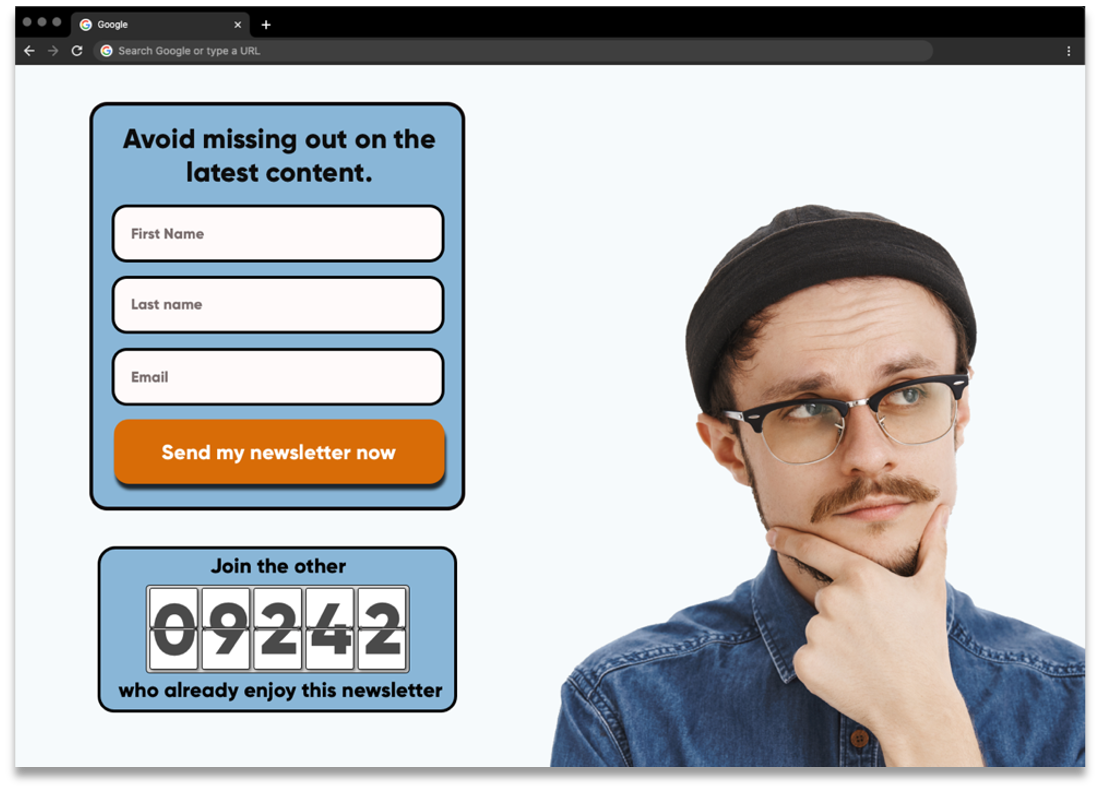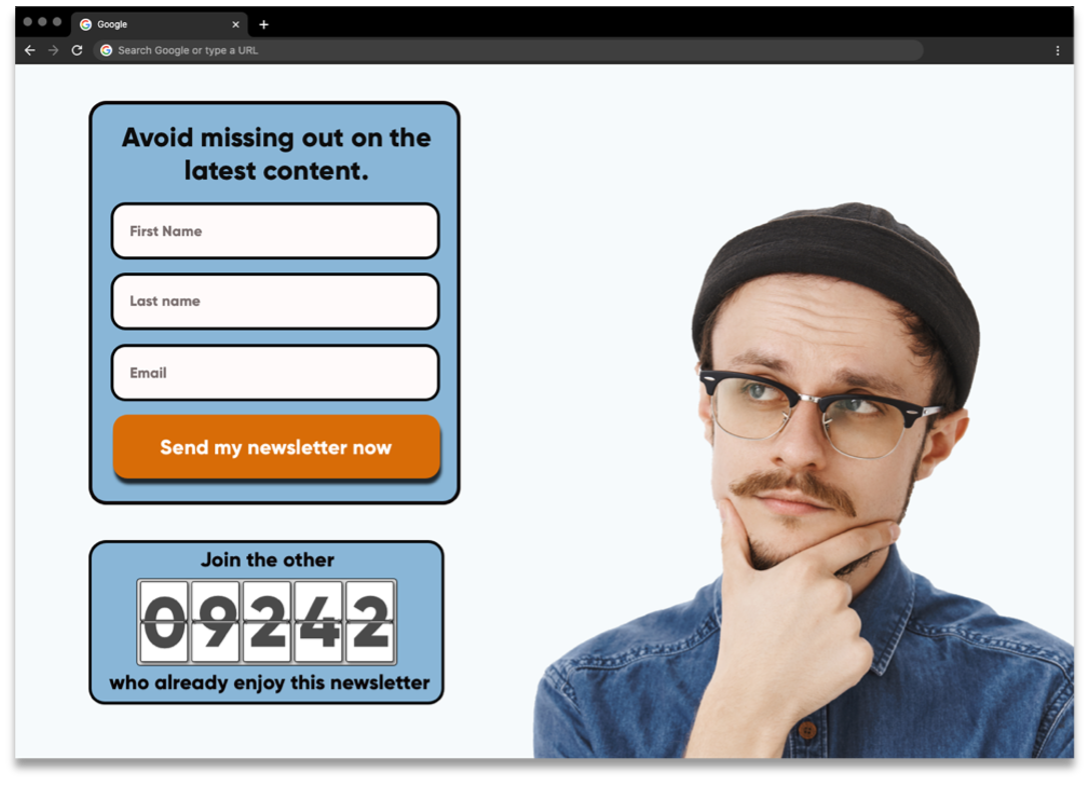Calls to action (CTA) are commonplace in emails and websites, designed to prompt users into a desired immediate response. This may include signing up for a newsletter or subscription package, completing a form, or making a charitable donation.
When it comes to user experience (UX) design, it is important to consider the limited attention of humans. Because of human biases, CTA’s can often be lost in design due to a lack of saliency (a term to describe how people are more likely to respond to a stimulus that is novel, simple, or accessible). This can be avoided through visual cues such as people, faces, and specifically, eyes. This element of evidenced-based behavioural design can draw attention to your CTA, increasing the likelihood of click-throughs onto the next step of the user journey.
If you are looking to optimise your CTA’s, then look no further.
The Science Behind Eye Gaze
Humans are accustomed to recognise and align their gaze with other eyes and faces in their environment. This shared attention or eye gaze allows us to understand people’s intentions and emotions, not only through eyes but also through people’s expressions. We take the gaze of others as a key indicator of where we should locate our attention. If someone else is looking somewhere, then we should too. Dating back to the first humans, tracking someone’s eye gaze and expressions could save your life from a hungry saber-toothed tiger spotted out of your sight.
This phenomenon is supported by research across several studies. For example, psychologists have shown that when people automatically align their gaze with a face they are presented with. This effect occurs even if faces are positioned to the left but their eyes are looking to the right. Because of this eye-superiority, participants follow the direction of the eyes rather than the direction of the faces.
Likewise, a research paper from 2014 found that in comparison to adverts that did not include faces, those including faces gazing directly towards a key message increased attention to the message in addition to text related to products and services. This study also found that adverts with faces were more memorable in terms of branding and advertising messages.
Thinking about UX design and CTA’s, these findings highlight three key points:
- Using images with a directed gaze can be an effective way to attract and direct attention.
- The direction of eyes plays a greater role in gaze compared to the positioning of faces.
- Misuse of eyes in design can have unintended consequences when it comes to user's desired behaviours.
Examples of Good and Bad Use of Eye Gaze in Design
Below are two examples highlighting the intended and unintended consequences of eye gaze. Both of the CTA pages below are identical except for the person looking towards or away from the CTA. Where are your eyes drawn to in the first image?

 Intuitively, your eyes will be drawn to the CTA button in the second image, following the eyes of the person looking towards the newsletter information. This simple addition or tweak to UX design can have monumental impacts on user key performance indicators and the conversion of views to click-throughs.
Intuitively, your eyes will be drawn to the CTA button in the second image, following the eyes of the person looking towards the newsletter information. This simple addition or tweak to UX design can have monumental impacts on user key performance indicators and the conversion of views to click-throughs.
Summary
Throughout this article, we have presented the idea of eye gaze, its impact on attention through academic research, and its ability to enhance UX design.
In sum, the three key takeaways are:
- Eye gaze is a person’s ability to recognise and align their gaze to that of the face they are viewing.
- The use of eyes and faces can be an effective way to attract and direct attention in UX design, with the positioning of eyes playing a greater role.
- It is important to consider the use of eyes in UX design, and whether content is promoting or hindering desired behaviours.
Understanding these aspects of behavioural design can have magnifying impacts on your business. If you are interested in learning more about how behavioural design can benefit your business, please get in touch below.
References:
Galfano, G., Dalmaso, M., Marzoli, D., Pavan, G., Coricelli, C., & Castelli, L. (2012). Eye gaze cannot be ignored (but either can arrows). The Quarterly Journal of Experimental Psychology, 65(10), 1895-1910.
Sajjacholapunt, P., & Ball, L. J. (2014). The influence of banner advertisements on attention and memory: human faces with averted gaze can enhance advertising effectiveness. Frontiers in psychology, 5, 166.